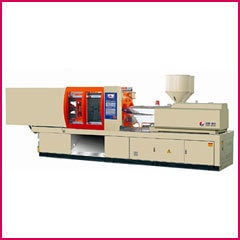Thermoplastic Elastomers
TPE Molding Made in the USA. With in-depth experience Jefferson Rubber Works, can take your TPE project from concept to reality with the highest level of quality at the most competitive price, on time, every time.
About Thermoplastic Elastomers
Thermoplastic elastomers (”’TPE”’), sometimes referred to as”’thermoplastic rubbers”’, are a class of copolymers or a physical mix of polymers (usually a plastic and a rubber) which consist of materials with both thermoplastic and elastomeric properties. While most elastomers are thermosets, thermoplastics are in contrast relatively easy to use in manufacturing, for example, by injection molding, which Jefferson Rubber Works does. Thermoplastic elastomers show both advantages typical of rubbery materials and plastic materials. The principal difference between thermoset elastomers and thermoplastic elastomers is the type of cross-linking bond in their structures. In fact, cross linking is a critical structural factor which contributes to impart high elastic properties. The crosslink in thermoset polymers is a covalent bond created during the vulcanization process. On the other hand, the crosslink in thermoplastic elastomer polymers is a weaker Intermolecular force or hydrogen bond or takes place in one of the phases of the material.
Types
There are six generic classes of TPEs generally considered to exist commercially that we work with. They are styrenic block copolymers, polyolefin blends, elastomeric alloys (TPE-v or TPV), thermoplastic polyurethanes, thermoplastic copolyester and thermoplastic polyamides. Examples of TPE products that come from block copolymers group are Styroflex, Kraton, Pellethane, Arnitel, Hytrel and more. While there are now many commercial products of elastomer alloy, these include: Dryflex, Santoprene, Geolast, Sarlink, Alcryn and Evoprene.
Background
It was not until the 1950s, when thermoplastic polyurethane polymers became available, that TPE became a commercial reality. During the 1960s styrene block copolymer became available, and in the 1970s a wide range of TPEs came on the scene. The worldwide usage of TPEs (680,000 tons/year in 1990) is growing at about 9% per year. The styrene-butadiene materials possess a two-phase microstructure due to incompatibility between the polybutadiene blocks, the former separating into spheres or rods depending on the exact composition. With low polystyrene content, the material is elastomeric with the properties of the polybutadiene predominating. Generally, they offer a much wider range of properties than conventional [[cross-linked]] rubbers because the composition can vary to suit customer needs.
Other TPE’s have crystalline domains where one kind of block co-crystallizes with other block in adjacent chains, such as in copolyester rubbers, achieving the same effect as in the SBS block polymers. Depending on the block length, the domains are generally more stable than the latter owing to the higher crystal melting point. That point determines the processing temperatures needed to shape the material, as well as the ultimate service use temperatures of the product. Such materials include Hytrel, a polyester-polyether copolymer and Pebax, a nylon or polyamide-polyether copolymer.
Advantages
TPE materials have the potential to be recyclable since they can be molded, extruded, and reused like plastics, but they have typical elastic properties of rubbers which are not recyclable owing to their thermosetting characteristics. TPE also require little or no compounding, with no need to add reinforcing agents, stabilizers, or cure systems. Hence, batch-to-batch variations in weighting and metering components are absent, leading to improved consistency in both raw materials and fabricated articles. TPEs can be easily colored by most types of dyes. Besides that, it consumes less energy and closer and more economical control of product quality is possible.
Disadvantages
The disadvantages of TPEs relative to conventional rubber or thermoset are relatively high cost of raw materials, general inability to load TPEs with low-cost fillers such as carbon black (therefore preventing TPEs from being used in automobile tires), poor chemical and heat resistance, high compression set and low thermal stability.
Processing
The two most important manufacturing methods with TPEs are extrusion and injection molding. Fabrication via injection molding is extremely rapid and highly economical. Both the equipment and methods normally used for the extrusion or injection molding of a conventional thermoplastic are generally suitable for TPEs. TPEs can also be processed by blow molding, thermoforming, and heat welding.
Applications
The fact that TPEs have many of the same performance characteristics that thermoset rubbers have makes it ideal candidate for design or replacement in a number of different applications. Some typical applications are listed below:
- Automotive: rack and pinion boots, air ducts, cable covers, bushings, grommets, body seals for windows and doors, dust covers, body plugs (fire wall grommets), convoluted boots.
- Appliance: pumps, gaskets, boots, hose connectors, plugs, baffles.
- Building and Construction: gaskets, weather stripping, bulb seals, expansion joints, set blocks.
- Business Machines: rollers for printers, vibration isolators, feet/bumpers.
- Electrical/Electronic: Molded connectors, and cabling applications.
- Fluid delivery: plumbing seals, filter and pump seals, closure seals.
- Food Contact: diaphragms, valve seals.
- Hardware: caster wheels, tool grips, rollers.
- Medical devices: closures, gaskets, stoppers, plunger tips.
- Sporting goods: grips, scuba equipment, handles.









